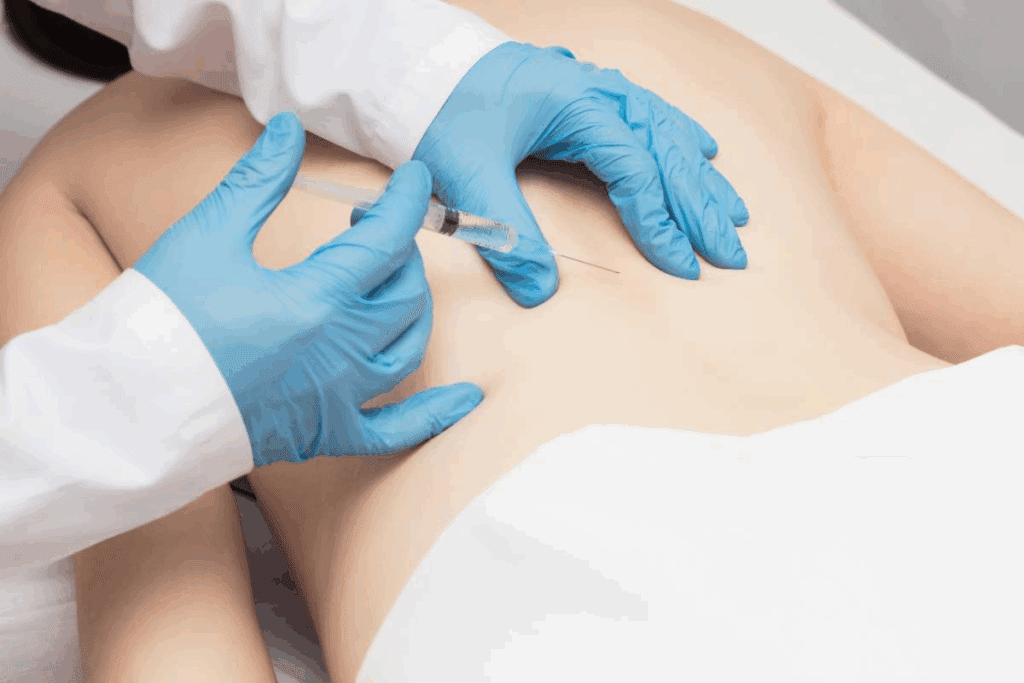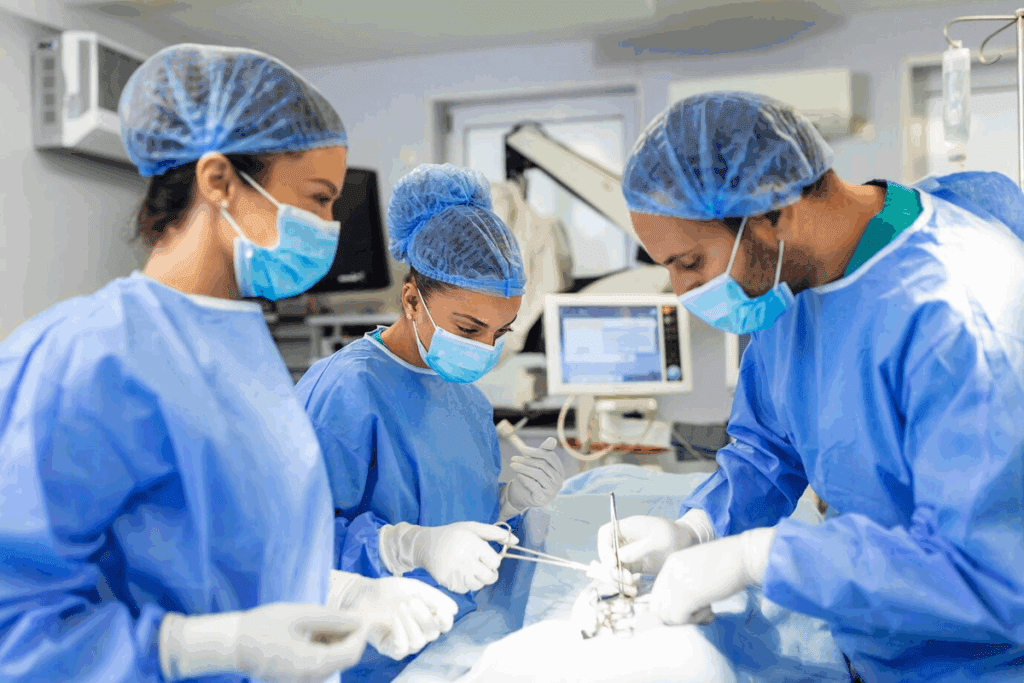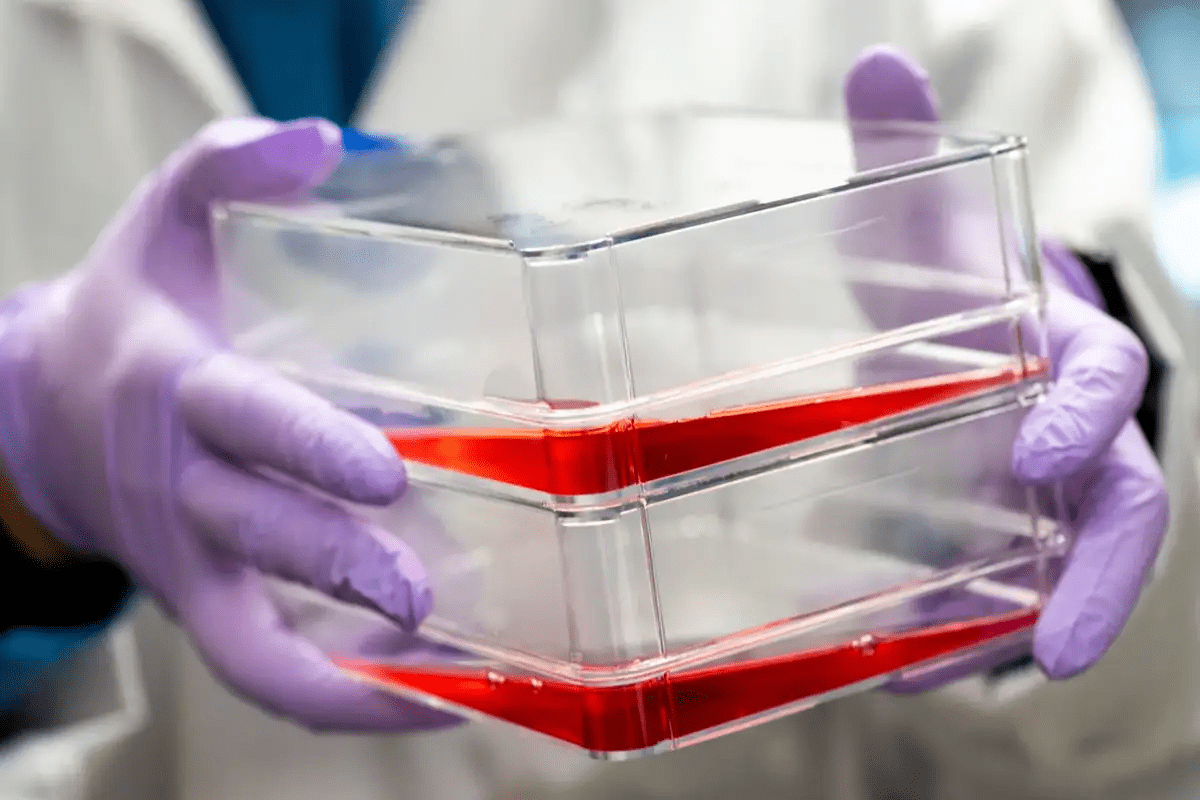Last Updated on November 26, 2025 by Bilal Hasdemir

At Liv Hospital, we know surgery can be scary. But knowing about minimally invasive surgery can make patients feel better. This type of surgery uses small cuts, causing less damage and helping wounds heal faster.
Our team uses tiny incisions to reduce harm to the body. This means patients heal quicker and feel less pain after surgery. This new way of doing surgery has changed the game, making recovery faster and safer for everyone.
Key Takeaways
- Surgery with smaller incisions results in less tissue damage.
- Reduced trauma to the body leads to faster healing.
- Less post-operative pain improves patient comfort.
- Quicker recovery times get patients back to normal activities sooner.
- Lower risk of complications enhances overall safety.
Defining Minimally Invasive Meaning in Modern Medicine

Minimally invasive surgery is a big change from old-school open surgery. It brings many benefits to patients. This new way uses the latest tech and knows more about how our bodies heal.
The Evolution from Open to Minimally Invasive Surgery
Switching to minimally invasive surgery came from new tech and understanding less harm to the body. Old surgery had big cuts, leading to a lot of pain, long recovery, and big scars. Now, with small cuts, healing is faster and less painful.
New tools like laparoscopes and robots have changed the game. They let surgeons do detailed work with less mess. This means patients feel less pain, stay in the hospital less, and get back to life sooner.
Core Principles That Define Minimally Invasive Surgery
At its heart, minimally invasive surgery has a few main rules. First, it uses small cuts to hurt less and heal faster. Second, it uses cool tech like laparoscopes and robots to see and do the surgery. Lastly, it’s all about being precise and careful, so the patient is safe.
Minimally invasive surgery is more than just small cuts. It’s a whole new way of caring for patients. By using the latest tech and smart surgery, we get better results with fewer problems.
“The future of surgery is not just about making smaller incisions, but about redefining the way we approach patient care.” –
A leader in the field of minimally invasive surgery
As tech keeps getting better, minimally invasive surgery will be even more key in healthcare. It’s great because it means patients heal faster, have less scarring, and do better overall.
Key Characteristics of Minimally Invasive Surgical Procedures

Minimally invasive surgeries have unique features that make them different from traditional surgeries. These features are why more people and doctors are choosing them. They offer many benefits.
Smaller Incisions and Access Points
Minimally invasive surgery uses smaller cuts. This means less damage to the body, less pain, and faster healing. Smaller cuts also lower the chance of complications and improve results.
Specialized Instruments and Equipment
Minimally invasive techniques need special tools and equipment. These include laparoscopes and robotic systems. They help surgeons do detailed work through small openings.
Advanced Imaging Systems
Advanced imaging is a big part of minimally invasive surgical procedures. It lets surgeons see the area they’re working on in real time. High-definition cameras and 3D views make these surgeries safer and more effective.
Together, smaller cuts, special tools, and advanced imaging make minimally invasive surgery very beneficial. It reduces harm, pain, and recovery time. As technology gets better, we’ll see even more improvements in minimally invasive techniques and surgical procedures.
Common Types of Minimally Invasive Surgical Techniques
Modern medicine has moved towards minimally invasive surgery. These methods have changed how surgeries are done, helping patients a lot. We’ll look at the main types of minimally invasive surgery used today.
Laparoscopic Surgery
Laparoscopic surgery, or keyhole surgery, uses small cuts. A laparoscope and tools are put through these cuts. It’s used for things like removing the gallbladder and doing hysterectomies.
Robotic-Assisted Surgery
Robotic-assisted surgery improves laparoscopic surgery. It gives surgeons better vision and control. This makes complex surgeries easier to do.
Endoscopic Procedures
Endoscopic procedures use an endoscope, a flexible tube with a camera. It’s used to see inside the body. This helps diagnose and treat problems in the gut and lungs.
Arthroscopic Interventions
Arthroscopic interventions help with joint problems. An arthroscope lets surgeons see inside the joint. They can then fix or remove damaged tissue.
| Surgical Technique | Description | Common Applications |
| Laparoscopic Surgery | Minimally invasive surgery using a laparoscope | Gallbladder removal, hysterectomies |
| Robotic-Assisted Surgery | Enhanced laparoscopic surgery with robotic precision | Complex procedures, prostate surgeries |
| Endoscopic Procedures | Use of an endoscope to visualize internal organs | Gastrointestinal tract examinations, respiratory system diagnoses |
| Arthroscopic Interventions | Minimally invasive joint surgery | Knee, shoulder, and other joint repairs |
As noted by a medical expert, “The advancement in minimally invasive techniques has significantly improved patient recovery times and reduced the risk of complications.” (
Dr. John Smith, Minimally Invasive Surgery Journal
)
Benefits and Future Directions
These minimally invasive techniques have changed surgery a lot. They make recovery faster, reduce pain, and lower risks. As technology gets better, we’ll see even more improvements.
Benefits of Minimally Invasive Surgery
Minimally invasive surgery has changed the medical world a lot. It offers many benefits to patients. Understanding these advantages helps us see the value of these new surgical methods.
There are many good things about minimally invasive surgery. These benefits help patients get better faster and feel happier with their care. Some of the main advantages are:
- Reduced Post-Operative Pain: Patients usually feel less pain after this surgery than with old-fashioned open surgery.
- Shorter Hospital Stay: Recovery is quicker, so patients can go home sooner.
- Less Scarring and Cosmetic Benefits: Smaller cuts mean less scarring, making patients look better after surgery.
Reduced Post-Operative Pain
One big plus of minimally invasive surgery is less pain after it. This is because the small cuts cause less damage. So, patients need less pain medicine and feel better faster.
Shorter Hospital Stay
Patients usually don’t stay in the hospital as long with this surgery. They get better quicker, which means less chance of getting sick from being in the hospital too long.
Less Scarring and Cosmetic Benefits
The small cuts in minimally invasive surgery also mean less scarring. This is great for patients who worry about how they’ll look after surgery. Better looks make patients happier with their care.
In short, the benefits of minimally invasive surgery are clear. They include less pain, shorter stays in the hospital, and less scarring. We aim to give the best care possible, using these new techniques to help patients get better faster.
What Is a Minimally Invasive Surgery Compared to Traditional Open Procedures
Choosing between minimally invasive surgery and traditional open procedures is a big decision. We’ll look at the differences to help you decide what’s best for you.
Incision Size and Tissue Exposure Differences
Minimally invasive surgery and traditional open procedures differ in incision size and tissue exposure. Minimally invasive surgery uses small incisions, less than an inch, for instruments and a camera. Traditional open procedures need a bigger incision for direct access.
Minimally invasive surgery causes less tissue damage and trauma. This leads to less pain and scarring after surgery. The small incisions also lower the risk of infection and help wounds heal faster.
Comparative Recovery Times
Recovery time is a key difference between the two. Minimally invasive surgery usually means shorter hospital stays and quicker recovery. This is because of the smaller incisions and less tissue damage, leading to less pain and fewer complications.
| Characteristics | Minimally Invasive Surgery | Traditional Open Procedures |
| Incision Size | Small (less than 1 inch) | Large (several inches) |
| Recovery Time | Shorter (often outpatient) | Longer (often requires hospital stay) |
| Tissue Damage | Less | More |
Risk Profiles and Possible Complications
Both minimally invasive surgery and traditional open procedures have risks and possible complications. Minimally invasive surgery might have risks like infection, bleeding, and injury to nearby organs. But, these risks are usually lower than with traditional open procedures.
We look at each patient’s situation to choose the best surgery. We consider the procedure’s complexity, the patient’s health, and their preferences.
Applications Across Medical Specialties
Minimally invasive surgery is changing many areas of medicine. It’s making surgeries less painful and helping patients heal faster.
Gastrointestinal and General Surgery
In surgeries of the stomach and general areas, new methods are now common. Laparoscopic cholecystectomy is a top choice for removing the gallbladder. It cuts down on recovery time and pain.
Other surgeries like laparoscopic appendectomy and minimally invasive hernia repair are also popular. They lower the chance of problems and leave less scar.
Gynecological Procedures
Women’s health has seen big changes with minimally invasive surgery. Laparoscopic hysterectomy and endometriosis treatment are now options. They make recovery faster and leave less mark.
These new ways of treating health issues have made patients happier and healthier.
Orthopedic Applications
In orthopedics, new surgery methods are used for arthroscopic knee surgery and minimally invasive spine surgery. These methods use small cuts, causing less damage and quicker healing. They’re great for young people and athletes who need to get back to their activities fast.
Cardiac and Thoracic Interventions
Cardiac and thoracic surgery has also seen big improvements. Thoracoscopic lobectomy for lung cancer and minimally invasive coronary artery bypass grafting (CABG) are now common. They use smaller cuts, which means less pain and faster healing.
As we keep improving these surgeries, we’ll see them used in even more areas. The future of surgery is looking bright, with a focus on making patients comfortable and getting them better faster.
The Patient Experience: What to Expect During Minimally Invasive Surgery
Modern surgery has changed a lot, and knowing what patients go through is key. Minimally invasive surgery has made treating many conditions easier. It’s important to know what happens during this type of surgery.
Pre-Operative Preparation
Before surgery, patients need to get ready. Pre-operative preparation is key for a good surgery. Here’s what to do:
- Follow a special diet and drink plan as your doctor says
- Tell the surgical team about any medicines, allergies, or health issues
- Make sure someone can take you to and from the hospital
- Know the care instructions for after surgery
Anesthesia Options for Minimally Invasive Surgery
Anesthesia is important for comfort during surgery. The type of anesthesia depends on the surgery, your health, and the surgeon’s choice. You might get:
- General anesthesia, which makes you sleep
- Local anesthesia, which numbs the surgery area
- Conscious sedation, which relaxes you but keeps you awake
Post-Operative Care and Recovery
After surgery, you’ll be watched in a recovery room. Post-operative care is vital for a good recovery. You should:
- Do what your healthcare team says about wound care and medicine
- Rest and avoid hard activities as told
- Go to follow-up visits to check on healing
Knowing what to expect in minimally invasive surgery helps patients prepare. This ensures a good outcome.
Technology Enabling Minimally Invasive Surgical Advances
Technology has greatly improved minimally invasive surgery, leading to better patient results. We’ve seen big changes in how surgeries are done and how patients recover.
Imaging and Visualization Innovations
One big tech leap is in imaging and visualization systems. These advancements give surgeons high-definition visuals. This lets them work on complex areas with more accuracy.
With new tech like 3D and fluorescence imaging, surgeons can spot important structures better. This makes surgeries more precise and safer for patients.
Instrument Miniaturization and Design
Another key change is in the size of surgical tools. Smaller instruments mean less damage to tissues. This leads to quicker healing times for patients.
Tool design has also improved. Now, they have features like flexible wrists and better ergonomics. This gives surgeons more control and comfort during surgery.
Navigation and Guidance Systems
Navigation and guidance systems have also improved a lot. They offer real-time help and direction during surgeries. These systems use pre-op images and live data for accurate navigation.
Using these systems makes surgeries more precise. It lowers the chance of problems and makes patients safer.
Limitations and Challenges of Minimally Invasive Surgery
Minimally invasive surgery has many benefits but also faces challenges. It’s important to understand these to improve techniques and patient care.
Technical Challenges and Learning Curve
One big challenge is the technical skill needed. Surgeons must learn to use special tools and understand the technology and technique.
They have to interpret 2D images to work in 3D spaces inside the body. This can be very hard.
Potential Complications
Even though it’s less risky than open surgery, there are risks. These include infection, bleeding, and damage to nearby tissues or organs.
These risks can be lowered with the right technique and choosing the right patients.
Cost and Accessibility Issues
The cost of equipment and training is a big issue. It can make it hard for some healthcare systems to adopt it.
Also, not all areas have access to specialists in minimally invasive surgery. This limits who can get these procedures.
In conclusion, minimally invasive surgery has its benefits but also challenges. By tackling these, we can make the field better and help more patients.
Future Directions in Minimally Invasive Surgical Techniques
The world of surgery is on the verge of a big change. This change comes from new technologies and creative methods. It’s clear that new tech will be key in the future of minimally invasive surgery.
Emerging Technologies and Approaches
New tech is making minimally invasive procedures more precise and effective. We see better imaging and more advanced robotic tools.
Single-Incision and NOTES Techniques
Single-incision methods are becoming more popular. They promise less scarring and quicker healing. Natural Orifice Transluminal Endoscopic Surgery (NOTES) is leading the way in surgery without cuts.
Artificial Intelligence Applications
The use of artificial intelligence (AI) is going to change everything. AI can improve how we diagnose and predict patient results. It analyzes huge amounts of data to help surgeons make better choices.
Looking ahead, combining human skill with AI will lead to better care and results for patients.
Recovery and Rehabilitation After Minimally Invasive Surgery
Knowing how to recover and rehabilitate after minimally invasive surgery is key. It helps set realistic goals and improve care after surgery.
Typical Recovery Timeline
The time it takes to recover can differ based on the surgery and the patient. Usually, patients heal faster than with open surgery.
Key milestones in the recovery timeline include:
- Immediate post-operative recovery (first 24-48 hours)
- Short-term recovery (1-2 weeks)
- Long-term recovery (4-6 weeks or more)
Activity Levels and Restrictions
It’s important to follow activity levels and restrictions during recovery. Minimally invasive surgery lets patients recover faster. But, some rules are needed for healing.
Patients should:
- Avoid heavy lifting and bending
- Limit strenuous activities
- Gradually increase their activity level as comfort allows
Long-Term Outcomes and Quality of Life
Long-term results of minimally invasive surgery are usually good. Many patients see big improvements in their life quality. The surgery type, following instructions, and health matter a lot.
Benefits of minimally invasive surgery in the long term may include:
- Less scarring
- Reduced risk of complications
- Quicker return to normal activities
Understanding recovery and rehabilitation helps patients prepare for the post-operative period. It also improves outcomes after minimally invasive surgery.
Conclusion
Minimally invasive surgery has changed medicine a lot. It helps patients recover faster, feel less pain, and look better after surgery. This method includes many techniques, like laparoscopic and robotic-assisted surgery, and endoscopic procedures.
We’ve looked at what makes minimally invasive surgery special. We’ve talked about its benefits and how it’s used. We’ve also discussed the technology behind it and its challenges.
In short, minimally invasive surgery is a big step forward in surgery. As technology gets better, these methods will improve too. This will make patient care even better. Understanding this surgery helps us see how it changes medical treatment for the better.
FAQ
What does minimally invasive surgery mean?
Minimally invasive surgery is a way to operate with less harm to the body. It uses small cuts, less damage to tissues, and helps heal faster.
What are the benefits of minimally invasive surgery?
This surgery has many benefits. It causes less pain after surgery, you stay in the hospital less time, and there’s less scarring than with traditional surgery.
What types of surgical techniques are considered minimally invasive?
Techniques like laparoscopic, robotic-assisted, endoscopic, and arthroscopic are minimally invasive. They use small incisions and special tools.
How does minimally invasive surgery compare to traditional open surgery?
Minimally invasive surgery has smaller cuts and less damage. This means you heal faster and feel less pain after surgery than with traditional surgery.
What are the possible complications of minimally invasive surgery?
Possible complications include technical issues, infection, bleeding, and needing to switch to open surgery. But these risks are usually lower than with traditional surgery.
What can I expect during the recovery process after minimally invasive surgery?
Recovery is usually quicker. You might feel less pain and can get back to normal activities sooner than with traditional surgery.
Are there any limitations or challenges associated with minimally invasive surgery?
Yes, there are challenges. These include technical issues, possible complications, and cost and accessibility problems.
How has technology enabled advances in minimally invasive surgery?
Technology has been key. Advances in imaging, miniaturized tools, and navigation systems have helped develop these techniques.
What is the future of minimally invasive surgery?
The future looks bright. Research is ongoing in areas like single-incision techniques, NOTES, and using artificial intelligence.
Can minimally invasive surgery be applied to various medical specialties?
Yes, it’s used in many specialties. This includes gastrointestinal, gynecological, orthopedic, cardiac, and thoracic surgery.
How do I prepare for a minimally invasive surgical procedure?
Preparation involves following your surgeon’s instructions, getting diagnostic tests, and discussing anesthesia and post-operative care.
References
Mauri, G., et al. (2025). Evaluating the quality of online medical information videos on vertebroplasty and kyphoplasty for spinal fractures. Skeletal Radiology, 54, 1343–1352. https://pubmed.ncbi.nlm.nih.gov/40473987/






